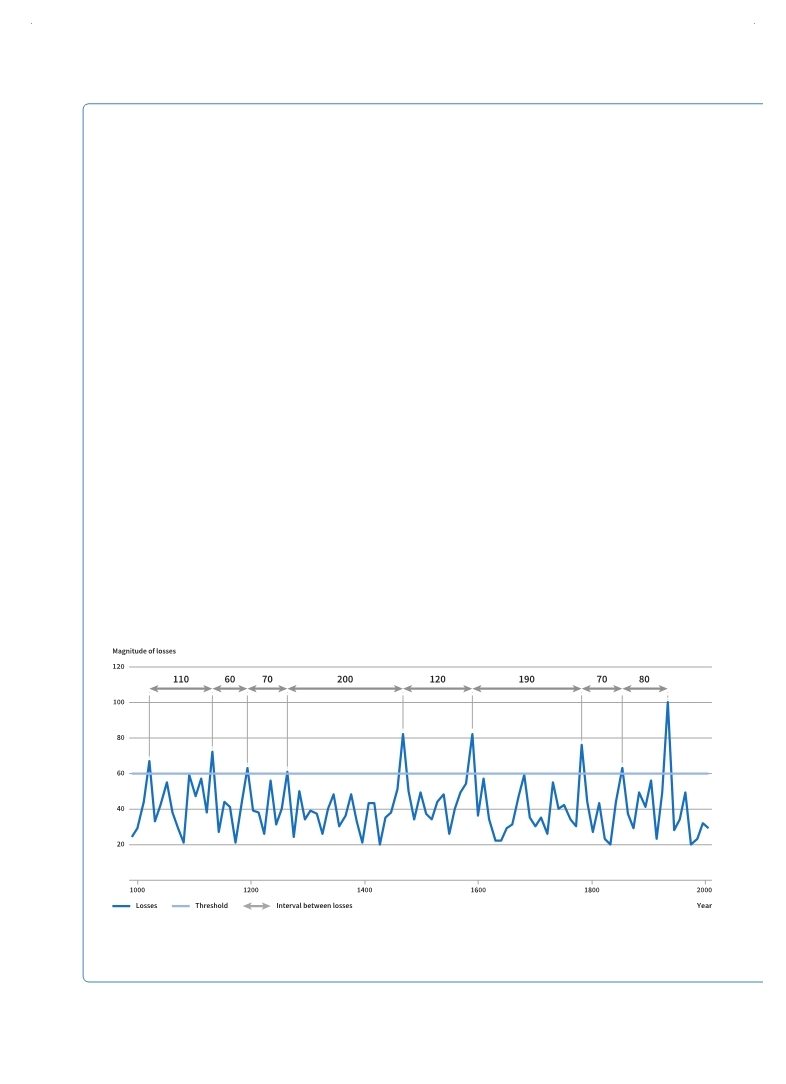 |
Global Assessment Report on Disaster Risk Reduction 2015
Making development sustainable: The future of disaster risk management |
 |
Global Assessment Report on Disaster Risk Reduction 2015
Making development sustainable: The future of disaster risk management |
|
|

56
Part I - Chapter 3
Box 3.1 The UNISDR-led Global Risk Assessment
Since 2011, UNISDR has spearheaded a multi-hazard Global Risk Assessment in partnership with leading scientific and technical organizations.9 The objective is to provide comparable open-access disaster risk metrics across countries and hazard categories with a relatively coarse resolution as a means of raising risk awareness.
This fills a major gap in understanding risk. Most probabilistic risk assessments have been developed commercially for the insurance industry and cover specific risks, mainly in higher-income countries. However, they are rarely accessible and are based on proprietary models. While more and more public-domain risk models are now being developed, the use of different methodologies and data sets makes comparison difficult. In the UNISDR-led assessment, probabilistic hazard models have been developed for earthquake, tropical cyclone wind and storm surge, tsunami and river flooding worldwide, for volcanic ash in the Asia-Pacific region and for drought in parts of Africa. A global exposure model for the built environment has been developed at a 1kmx1km resolution along coastlines and 5kmx5km elsewhere. Appropriate vulnerability functions have been used on the basis of expert knowledge in each region. The impact of climate change on wind hazard in the Caribbean and on drought in Africa has also been modelled. The open-source multi-hazard risk platform CAPRA10 is used to calculate risk. At this point, the flood risk model is still being finalized, meaning that the estimates of flood risk presented in this chapter should be considered provisional and are likely to change. The principal metric from the global assessment used in this report is average annual loss (AAL), also known as the pure risk premium (when normalized by exposed value or capital stock). This is the expected average loss per year considering all the events that could occur over a long time frame. It is a compact metric with a low sensitivity to uncertainty. Unlike historical estimates, AAL takes into account all the disasters that could occur in the future, including very intensive losses over long return periods, and thus overcomes the limitations associated with estimates derived from historical disaster loss data. The other metric presented is probable maximum loss (PML), which represents the maximum loss that could be expected within a given period of time. Typically, PML is relevant to determine the size of reserves that, for example, insurance companies or a government should have available to buffer losses. (Source: UNISDR.)
Figure 3.2 Return periods
|
 
Page 1Page 10Page 20Page 30Page 40Page 46Page 47Page 48Page 49Page 50Page 51Page 52Page 53Page 54Page 55Page 56Page 57->Page 58Page 59Page 60Page 61Page 62Page 63Page 64Page 65Page 66Page 67Page 68Page 69Page 70Page 80Page 90Page 100Page 110Page 120Page 130Page 140Page 150Page 160Page 170Page 180Page 190Page 200Page 210Page 220Page 230Page 240Page 250Page 260Page 270Page 280Page 290Page 300Page 310
|
|
 
|
 
|
